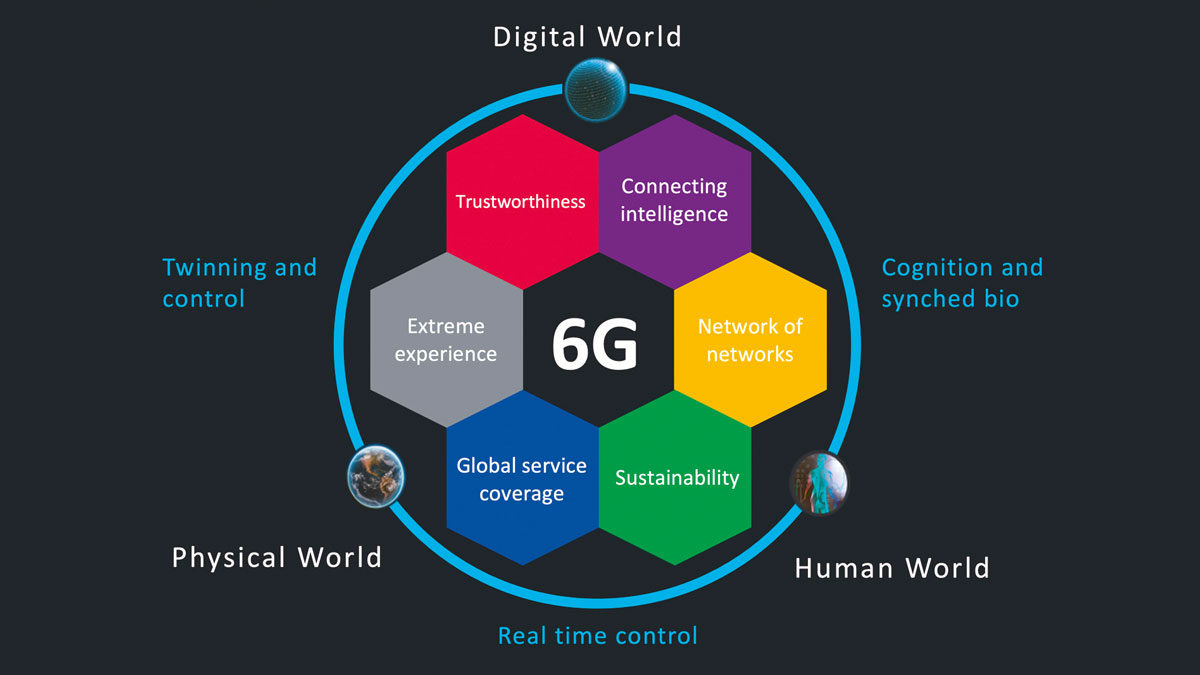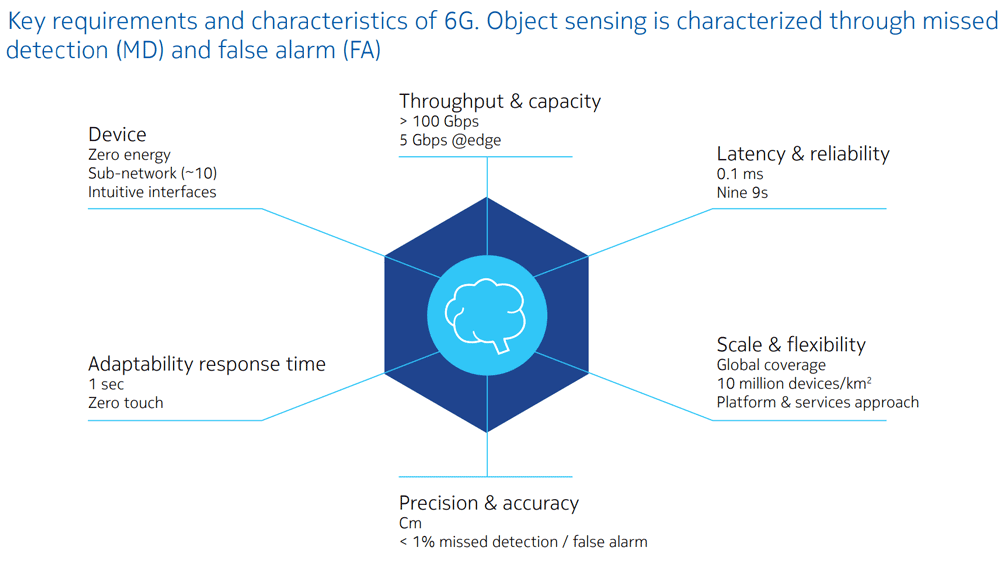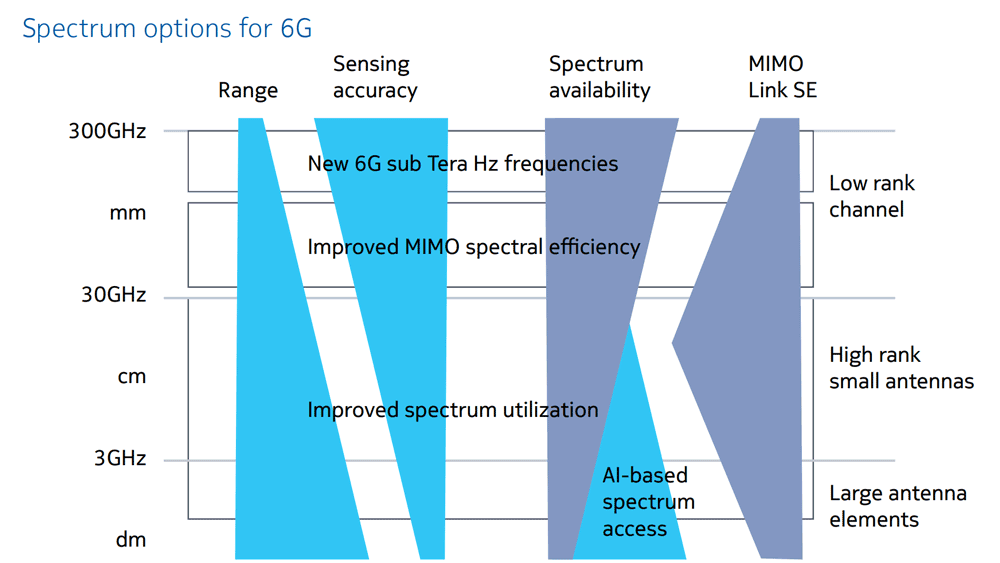Nokia to Lead the EU’s 6G Project Hexa-X
Nokia leads the way in the next generation of wireless networks as the overall project leader for Hexa-X, the European Commission’s 6G flagship initiative for research that will drive the overall 6G vision. The project goals include creating unique 6G use cases and scenarios, developing fundamental 6G technologies and defining a new architecture for an intelligent fabric that integrates key 6G technology enablers.
The Hexa-X project has been awarded funding from the European Commission under the European Union’s Horizon 2020 research and innovation program, a significant step toward bringing together key industry stakeholders in Europe to take the lead in advancing 6G. The stakeholders represent the full value-chain of future connectivity solutions ranging from network vendors, communication service providers, verticals, and technology providers, as well as the most prominent European communications research institutes.
With Nokia taking the lead, the Hexa-X project aims to connect the physical, digital, and human worlds, firmly anchored in future wireless technology and architectural research. Wireless technologies are critical for society and the economy today and their importance will continue to steadily increase with 5G and its evolution, enabling new ecosystems and services.
Nokia has been at the forefront in commercializing every generation of wireless technology, from the first GSM call to the best performing 4G networks and the world’s fastest 5G speeds. Nokia Bell Labs, the world-renowned industrial research arm of Nokia, pioneered many of the fundamental technology innovations that are being used to develop 5G standards. These include Massive MIMO, mmWave access, coding, and 5G radio stack design, which enabled 3GPP Release 15 initial deployments. Nokia Bell Labs is also developing enablers for the upcoming 3GPP Release 16 and 17 that are key for the digital transformation of industrial verticals, such as 5G New Radio (NR) in unlicensed spectrum bands, NR-Light to support massive IoT with medium-rate sensors and localization.
Building on this strong heritage, Nokia is leading the 6G joint research and pre-standardization process and Nokia Bell Labs is already researching the fundamental technologies that will comprise 6G. Nokia expects 6G systems to launch commercially by 2030, following the typical 10-year cycle between generations.
“Even though there is still a lot of innovation in 5G with the release of new standards, we are already exploring 6G in our research lab. In the 6G era we will see applications that will not only connect humans with machines but also connect humans with the digital world. Such a secure and private connection can be used for preventive healthcare or even to create a 6G network with a sixth sense that intuitively understands our intentions, making our interactions with the physical world more effective and anticipating our needs, thereby improving our productivity,” Peter Vetter, Head of Access and Devices Research, Nokia Bell Labs, said.
Nokia Bell Labs, together with the Hexa-X consortium, has identified six research challenges that need to be addressed to lay the technical foundation for 6G wireless systems: Connecting intelligence; Network of networks; Sustainability; Global service coverage; Extreme experience; Trustworthiness.
In addition to Hexa-X, Nokia is actively involved in other European 6G research initiatives such as 6Genesis, a national 6G program funded by the Academy of Finland and led by the University of Oulu, and Horizon Europe Smart Networks and Services, which aims to secure European leadership for the development and deployment of next generation network technologies and services, while accelerating European industry digitization.
The Hexa-X project starts on 1 January 2021, with a planned duration of 2.5 years. Nokia is the project lead for Hexa-X, working closely with a strong consortium of European partners.
Hexa-X vision on 6G and research challenges
In the past four decades, driven by continuous wireless innovations and by market needs, mobile networks and the telecommunications industry have significantly transformed human society and the lives of billions. The primary focus is always to meet peoples’ needs to communicate anywhere, anytime. Since the time of 4G, the focus has been extended to delivering a digital infrastructure that also supports professional services, vertical sectors, and machine-to-machine communication. With the advent of 5G, this move has been amplified considerably. 5G is expected to pave the way for the digitalisation and transformation of key industry sectors like transportation, logistics, commerce, manufacturing, health, mining, smart cities, and public safety. This trend of digitalisation, making industries more connected, automated, and smart, in conjunction with forecasted consumer interest for increasingly demanding services (e.g., AR/VR at scale) will continue. Therefore, the need for connectivity services is expected to keep growing exponentially and will call for bitrates at the order of hundreds of Gbps to Tbps.
While 5G has enabled us to consume digital media anywhere, anytime, the technology of the future should enable us to embed ourselves in entirely virtual or digital worlds. In the world of 2030, human intelligence will be augmented by being tightly coupled and seamlessly intertwined with the network and digital technologies. With advances in artificial intelligence, machines can transform data into reasoning and decisions that will help humans understand and act better in our world. As the domestic and industrial machines of today transform into swarms of multi-purpose robots and drones, new man-machine haptic and thought interfaces to control them from anywhere should become an integral part of the future network. Such a transformation will undoubtedly generate unprecedented economic opportunities and societal challenges as we move towards the 2030 timeframe; moreover, it will call for a fundamental shift in the way mobile networks are designed. Multiple key requirements must be reconciled, such as how to serve the massively growing traffic and the exploding numbers of devices and markets, while accomplishing the highest possible standards regarding energy efficiency, security, and efficiency in deployment (coverage) and operation, and enabling sustainable growth in a trustworthy way – this is the context for the 6G wireless networks vision. The main motivation factors are the following.
Technology push
The advent of key technologies such as Artificial Intelligence (AI), radio access beyond 100 GHz, network virtualisation and disaggregation concepts promise to add important abilities and design dimensions for wireless networks. A timely start of a technology and concept evaluation is required, even if some of these technologies are still on a low Technology Readiness Level (TRL), to understand the potential performance and impact on the overall system architecture. It is crucial to apply these new technologies to excel in new usage domains, and for making them indispensable parts of the future society.
Society and industry pull
Climate change, pandemics, digital divide, social inequalities, as well as distrust and threats to democracy, are some of the unprecedented societal challenges of our times. It is of utmost importance to mitigate these devastating challenges, while also creating opportunity for innovation-lead growth and employment. Wireless networks, being the central component of a digitalised society, must reflect such complex needs and opportunities and proactively provide sustainable digital solutions, to help address United Nations (UN) and European Sustainable Development Goals (SDGs). Digitalisation of industry sectors will continue to improve efficiency and resilience of the economy, promoting sustainable growth and creating meaningful jobs, supporting the transformation of Europe to a strong circular economy.
In light of the above, the 6G flagship initiative Hexa-X has been established, by bringing together the key industry stakeholders, along with the full value-chain of future connectivity solutions ranging from network vendors, operators, verticals, and technology providers (e.g., software and Internet of Things (IoT) solutions), as well as the most prominent European research institutes and universities in this domain, streamlining expert forces and creating a critical mass to lead an integrated effort of research and development towards 6G.
As a starting point, a 6G vision was jointly defined by the 25 participants of Hexa-X. Taking the above-mentioned motivation factors into account, this vision ties key technical enablers together as a whole through an x-enabler fabric (foundation/modular architecture for developing the vision) serving three worlds intertwined: a) a human world of intelligence and values; b) a digital world of information; c) and a physical world of processes. Real-time interactions will be vital to allow the worlds to integrate and meet future challenges. In this vision, six main research challenges were identified, which must be addressed to lay the technical foundation for the wireless systems of the B5G/6G era:
- Connecting intelligence: 6G shall assume a crucial role and responsibility for large-scale deployments of intelligence in the wider society. 6G shall provide a framework to support (e.g., through advanced resource management), enhance (e.g., through supplementary data, functionality, insights, etc.), and ultimately enable real-time trustworthy control – transforming AI/Machine Learning (ML) technologies into a vital and trusted tool for significantly improved efficiency and service experience, with the human factor (“human in the loop”) integrated.
- Network of networks: 6G shall aggregate multiple types of resources, including communication, data and AI processing that optimally connect at different scales, ranging from, e.g., in-body, intra-machine, indoor, data centres, to wide areas networks. Their integration results in an enormous digital ecosystem that grows more and more capable, intelligent, complex, and heterogeneous, and eventually creates a single network of networks. It will serve various needs, support different nodes, and means of connectivity, and handle mass-scale deployment and operation fulfilling a large diversity of requirements with utmost (cost) efficiency and flexibility, promoting business and economy growth, and addressing major societal challenges, like sustainable development, health, safety, and digital divide.
- Sustainability: 6G shall transform networks into an energy-optimised digital infrastructure and will deeply revise the full resource chains of wireless networks for reduced global ICT environmental footprint. Its digital fabric shall also create the ability to sense and understand the state of the physical world in real-time and as such boost sustainability from the environmental, economic, and social perspectives – delivering effective and sustainable digitisation tools for global industry, society, and policy makers, bring UN SDGs to life and assist the implementation/operation of EU Green Deal, after the Covid-19 pandemic, towards a circular economy and a sustainable world.
- Global service coverage: 6G shall put digital inclusion as one of the top priorities and encompass efficient and affordable solutions for global service coverage, connecting remote places, e.g., in rural areas, transport over oceans or vast land masses, enabling new services and businesses that will promote economic growth and reduce digital divide as well as improving safety and operation efficiency in those currently under-/uncovered areas.
- Extreme experience: 6G shall provide extreme bitrates (access in the order of hundreds of Gbps to few Tbps), extremely low (imperceptible) latencies, seemingly infinite capacity, and -precision localisation and sensing, pushing the performance of networks a leap beyond what is possible with 5G – unlocking commercial values of new technologies at GHz-THz range, supporting extreme experience of services, e.g. fully immersive communication or remote control at scale, and accelerating the pace of digitisation.
- Trustworthiness: 6G shall ensure the confidentiality and integrity of end-to-end communications, and guarantee data privacy, operation resilience and security, building trust of wireless networks as well as its enabled applications among consumers and enterprises – supporting and promoting European values of security, trust, and privacy protection as well as the technological EU sovereignty goal for fostering an open, trustworthy, and deeper democratic Europe in the digital age.
To fully embrace such a vision, Hexa-X recognises the necessity to expand the fundamental network design paradigm from mainly performance-oriented to both performance- and value-oriented. Here value entails intangible yet important human and societal needs such as sustainability, trust, and inclusion. This will lead to a new class of evaluation criterion, i.e., Key Value Indicators (KVIs) that must be understood, developed, and adopted in the network design towards 6G. Hexa-X understands that the development towards 6G requires wide support and global efforts. It will strive for openness and collaboration among the European and global research community, standardisation bodies, and policy makers through, e.g., organisation of public workshops, preparation of joint whitepapers, and active participation in major events. An open, modular, and flexible framework – the x-enabler fabric – will be developed as a foundation, to integrate and weave together the technical enablers that address the above six research challenges, from both Hexa-X project itself and other 6G projects. The realization of a new network generation takes about 10 years, and to guide the Research and Innovation (R&I) globally towards 6G during this time, Hexa-X will lay the foundation for the network of 2030 and develop long-term strategical roadmaps based on research outputs obtained within Hexa-X project as well as from other 6G projects.









